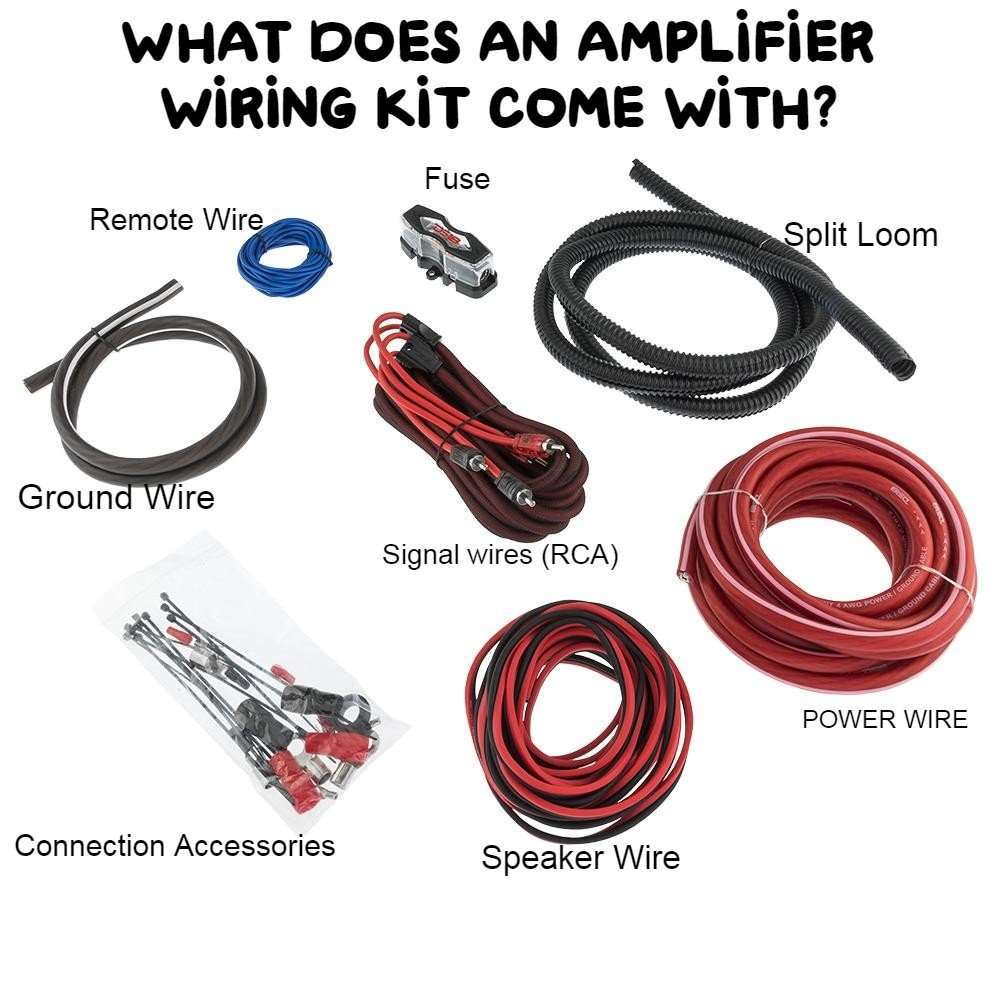To start, there are 4 different types of amplifiers normally used in the aftermarket car audio world.
- Single channel (mono Block)
- 2 channel
- 4 Channel
- 5 channel (sometimes 6)

Amazon affiliate here: If you click any Amazon links on my pages and purchase any products I get a small commission from within the original price. Thank you!
They are generally categorized by the number of input and output channels they have. The channels represent an opportunity to connect to a speaker. The type of speaker is determined by the frequencies the amplifier will send to that particular channel.
For example: Mono Block or single channel amplifiers are usually used to power subwoofers. The reason being is that subwoofers only need 1 channel (a negative and a positive wire) to work. The amplifier has an internal crossover that will only allow frequencies that a subwoofer can properly produce to go into that subwoofer.
What is a single channel amplifier?
As described above, a single channel amplifier is used to power only one speaker. This is generally a subwoofer.
Often times single channel amplifiers come with 2 channels and will confuse buyers. Be aware that this is not an actual 2 channel amplifier, it’s still a single channel. Both channels are actually receiving the exact same signal from the amp and are producing a mono image as appose to the stereo sound that a real 2 channel amplifier will create.
What is a 2 channel amplifier?
A 2 channel amplifier is dedicated to powering 2 speakers.
What is a 4 channel amplifier?
A 4 channel amp is made to power up to 4 speakers.
Find Your Audio System's Ideal Wire Gauge
What is a 5 channel amplifier?
A 5 channel amplifier will power 5 speakers. The difference with these amplifiers is that the 5th channel is usually dedicated to a subwoofer. With that being said, we do not recommend buying a 5 channel amplifier if you do not intend on powering 5 channels.
Getting the proper Type of wiring Kit for your amplifier
Getting the proper wiring kit for your amplifier has to do with a few things. The amount of amperage your amplifier demands, how many channels your amplifier can power and how long your wires need to be in order to safely run all of your wires.
Channels
When you purchase an amplifier, one of your goals is to power a speaker or multiple speakers. If I have 4 speakers in my car that I would like to amplify ill need a 4 channel amplifier. For every speaker id like powered ill need 1 channel. This channel is dedicated to 1 single speaker, generally.
Length of Wires
Your kit will come with tons of wires, it’s up to you to purchase a kit that has the proper length. You’ll need your power wire to run to your battery and your remote turn on wire to run to your stereo or any source that gives your 12 volts when your key is turned to the accessory position (right before crank).
A trick we use is to run a 25ft junk wire or string from the battery to the amplifier. We then add 2 feet to that and cut the wire or string. You’ll pre-cut your power wire to that length. The same can be done with your ground wire, speaker wires and remote turn on wire. You’ll just run a junk wire or string to your foreseen connection locations, add 2 feet and cut.
Amperage
Your amplifier should have its amperage ratings on the box in the spec’s section. It is important that you take note of this rating and use it when purchasing an amplifier wiring kit. If you purchased an amp without its packaging look around the amplifier for its fuses, add up the number on the fuses. If you see 2 fuses with the number 40 on them you can assume the amplifier consumes 80 amps at any given time. The fuse on the wiring kit you purchase should be no less than 80 amps.
Your amplifiers amperage rating will tell you how much amps the fuse on your wiring kits power wire should be rated for.
For more information on what you will need for an amplifier installation: Visit our Amplifier Installation Resource page
What Gauge/AWG Amplifier Wiring Kit Should I use?
The size of the power and ground wire needed for your system are determined by the length of the wire and the amount of current your amplifier demands (current is measured in amperes or amps). As mentioned above, you can find the amperage your amp needs on the specs side of the packaging or on the amplifier itself.
We use a chart when picking wire sizes. Generally we can remember specifications for amplifiers but it doesn’t hurt to use something visual like a chart when your first starting out or you need something to refer to.


What Comes In A Wiring Kit?
A good wiring kit will come with everything you need to get audio in and out of the amplifier, power the amplifier and a few accessories to run the wires. We like to use kits that contain only Oxygen Free wires (aka OFC), this allows for 100% wire efficiency and less problems in the future with corrosion and hot spots along the wires. Here is a list of the important parts included in an amplifier wiring kit:
- An oxygen free Copper power wire (OFC)
- An Oxygen free copper ground wire
- A bundle of speaker wires (if installing a subwoofer wiring kit)
- A single remote turn on wire
- A fuse with the proper rating (preferably already attached to the power wire)
- RCA wires, also known as signal wires (determined by the amount of channels)
- Split loom (used to cover your power and/or ground wire for protection)


Commonly Asked Questions
If I purchase a 2 channel amplifier wiring kit for my 4 channel amplifier can I still use it?
Yes, the only thing missing from your kit is 2 more channels of input. Purchase another set of 2 RCA wires. Make sure to verify they are the proper length before you buy and you should be all set!
Do my power and ground wires have to be the same Gauge/AWG?
Yes, this Is very important. The size of your power wires determine the amount of current that gets to your amplifier. This is only an issue when one of these wires is a smaller gauge/awg wire than the recommended size required for your system. If your power wire or ground wire is smaller then you’ll create a voltage drop that could result in bad performance of your sound system or even worse, an electrical fire.
When should I use a Hi/Lo converter?
You’ll need a hi-lo converter if your stereo doesn’t have the RCA style input that your amplifier uses inside of your amplifier wiring kit. This is usually the case with factory radios, aftermarket radios generally have RCA style outputs behind them. Regardless, always check.
Can I use the aftermarket amplifier wiring I already have in my vehicle?
Maybe. You’ll need to verify two things first. Does this wiring meet the needs of the amplifier? The second thing is to verify if that wiring works and is healthy enough for your new components
Does the length of wire really matter?
Yes! The longer the wire the more resistance is present inside of it. This is why longer wires need to be thicker than a shorter wire. Resistance can create a current drop and will negatively affect your amps performance. As stated earlier this can also cause electrical fires and damage to that wire.
What gauge/awg speaker wire should I use for my subwoofer?
For subwoofer speaker wires we generally use 12 awg/gauge. We have also been known to run 10 gauge speaker wire to the subwoofers depending on the length we need.


